Abstract
Behavioral momentum is the product of response rate and resistance to change. The data on relative resistance to change are summarized for pigeons responding on single-key two-component multiple schedules, in the initial links of two-key multiple chained schedules, and in equivalent components of two-key serial schedules. For single-key procedures, the ratio of resistance to change in two schedule components is shown to depend on the ratio of reinforcer rates obtained in the presence of the component stimuli. For two-key procedures, the ratio of resistance to change in equivalent components is shown to depend on the ratio of reinforcer rates correlated with key locations. A model based on stimulus-reinforcer contingencies that combines the reinforcer rates in schedule components summed over key locations and reinforcer rates correlated with key locations summed over components, each expressed relative to the session average reinforcer rate, gives a good account of the data. An extension of the relative law of effect for multiple schedules fails to provide a complete account of resistance to change, but both approaches are needed for a comprehensive understanding of behavioral momentum.
Full text
PDF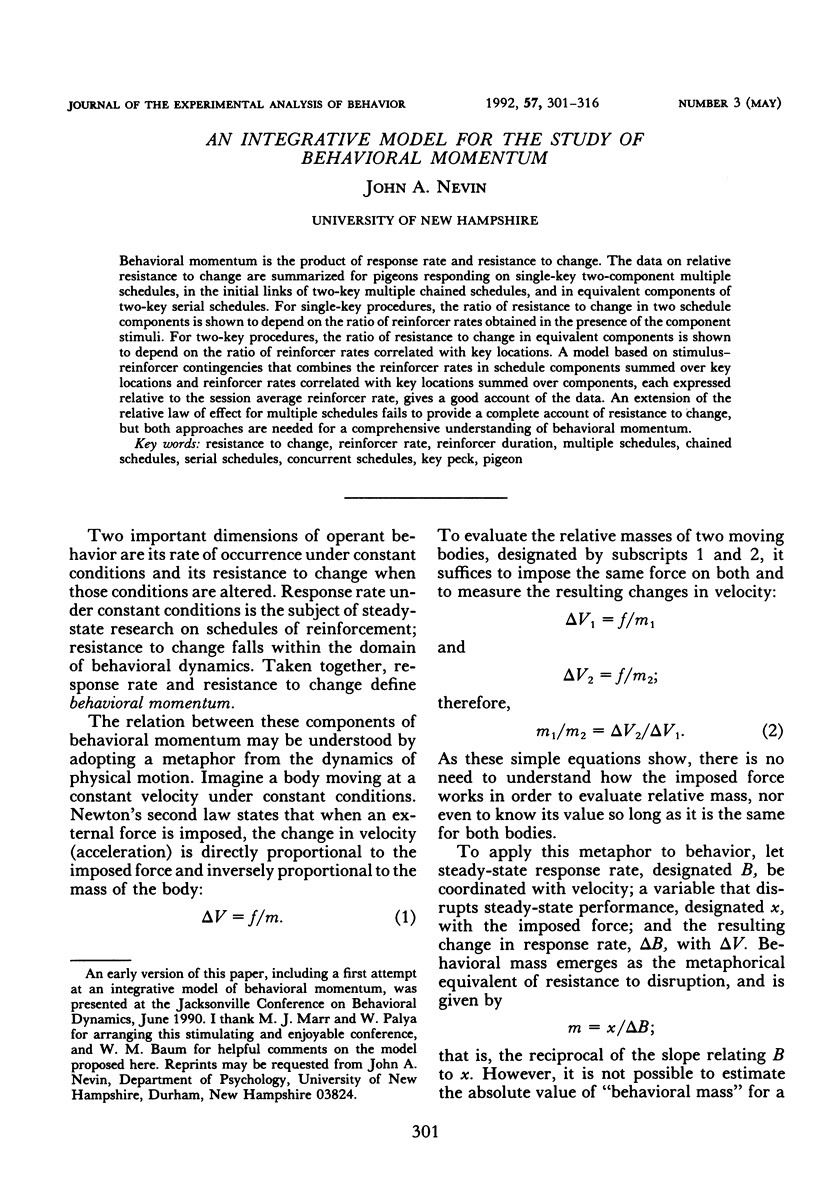
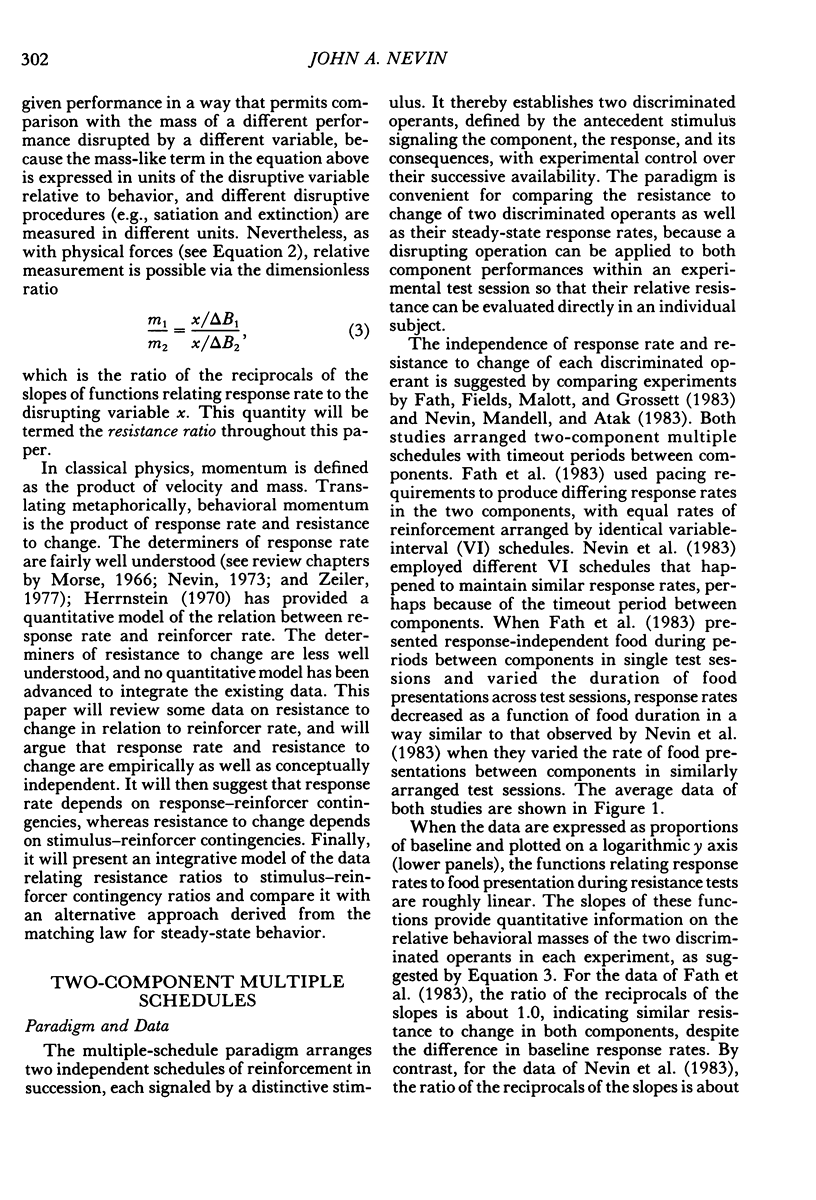
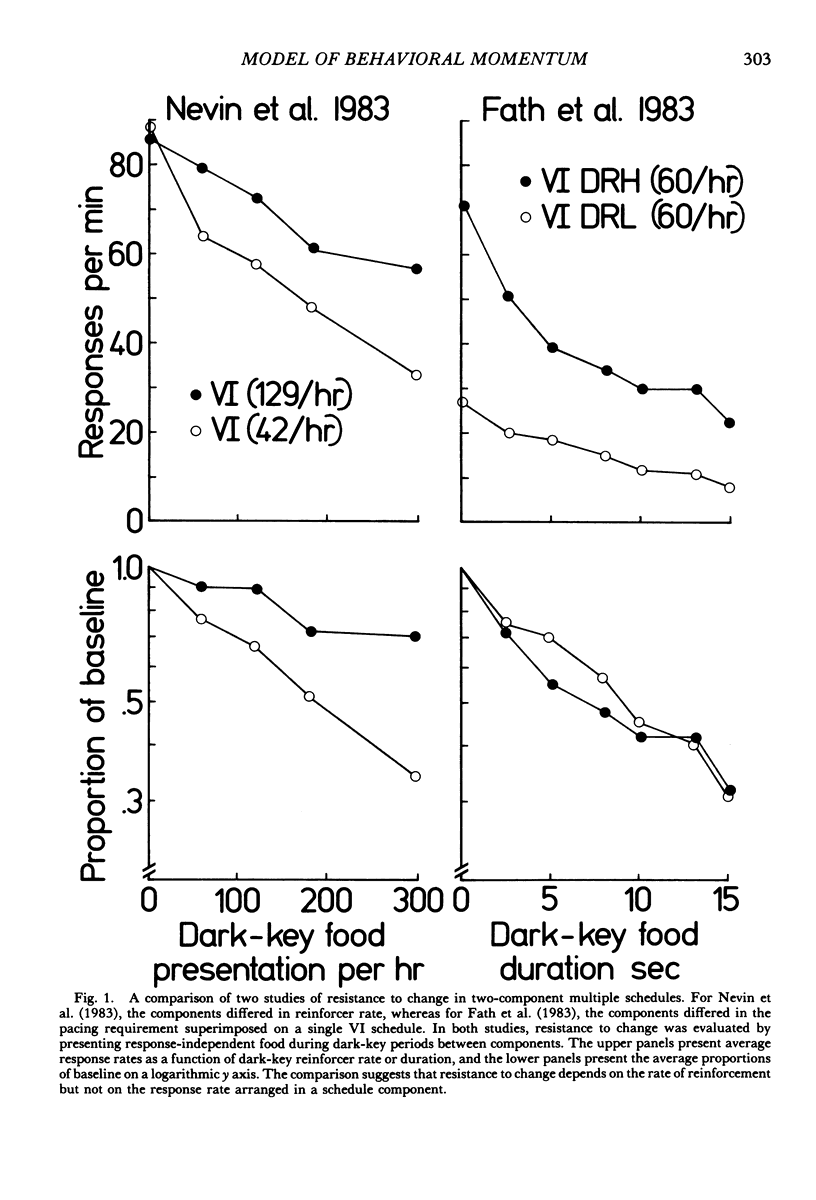
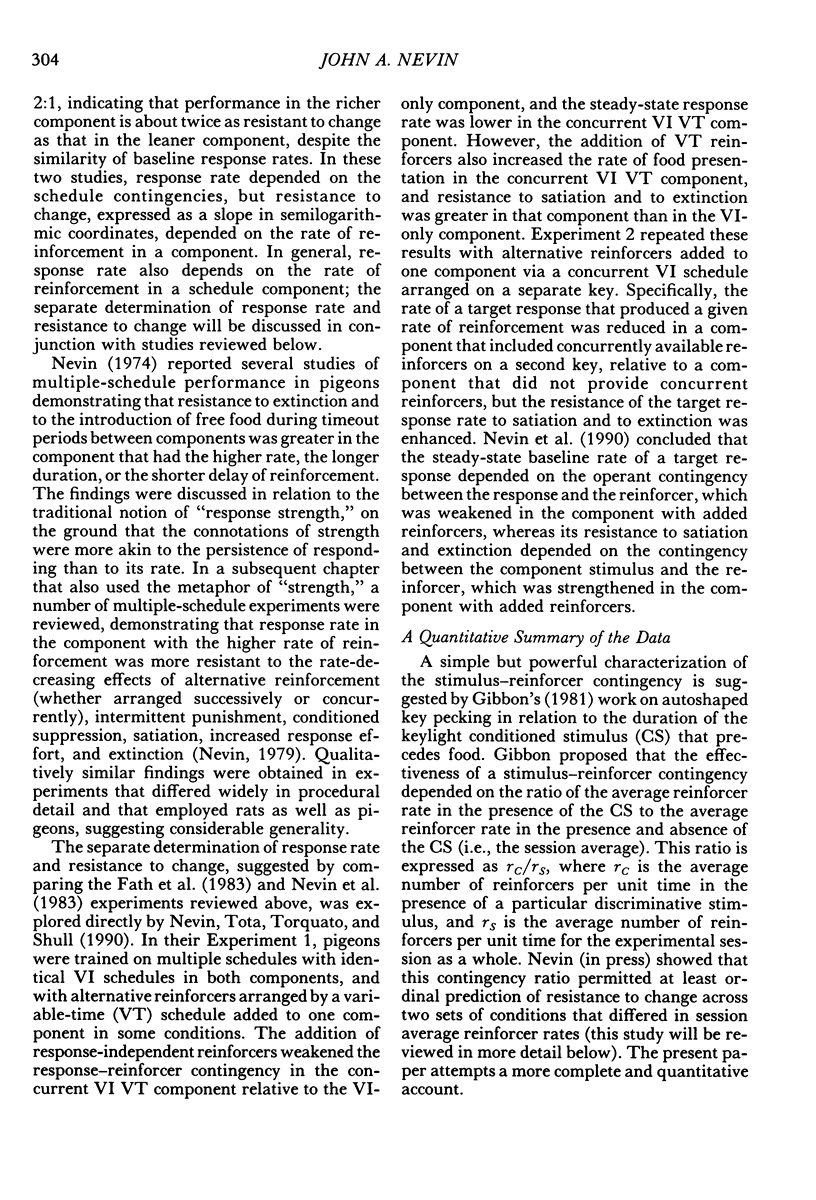
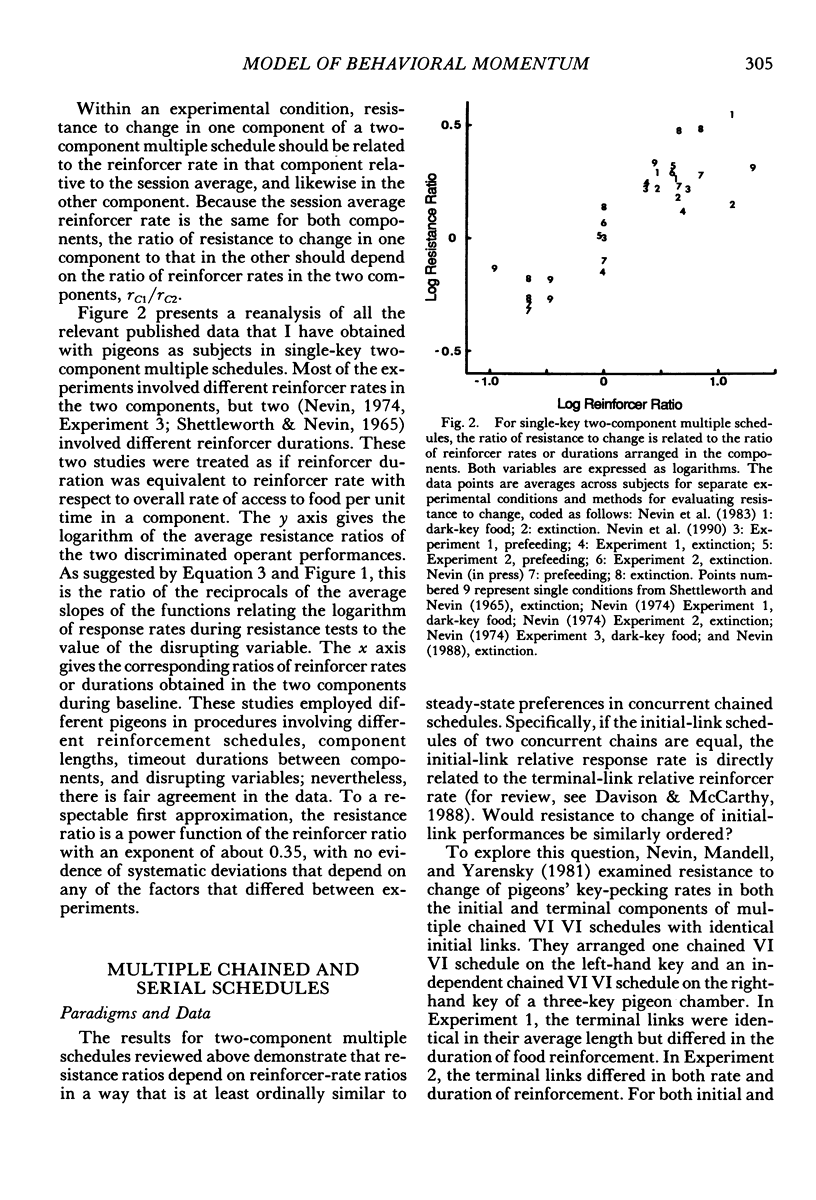
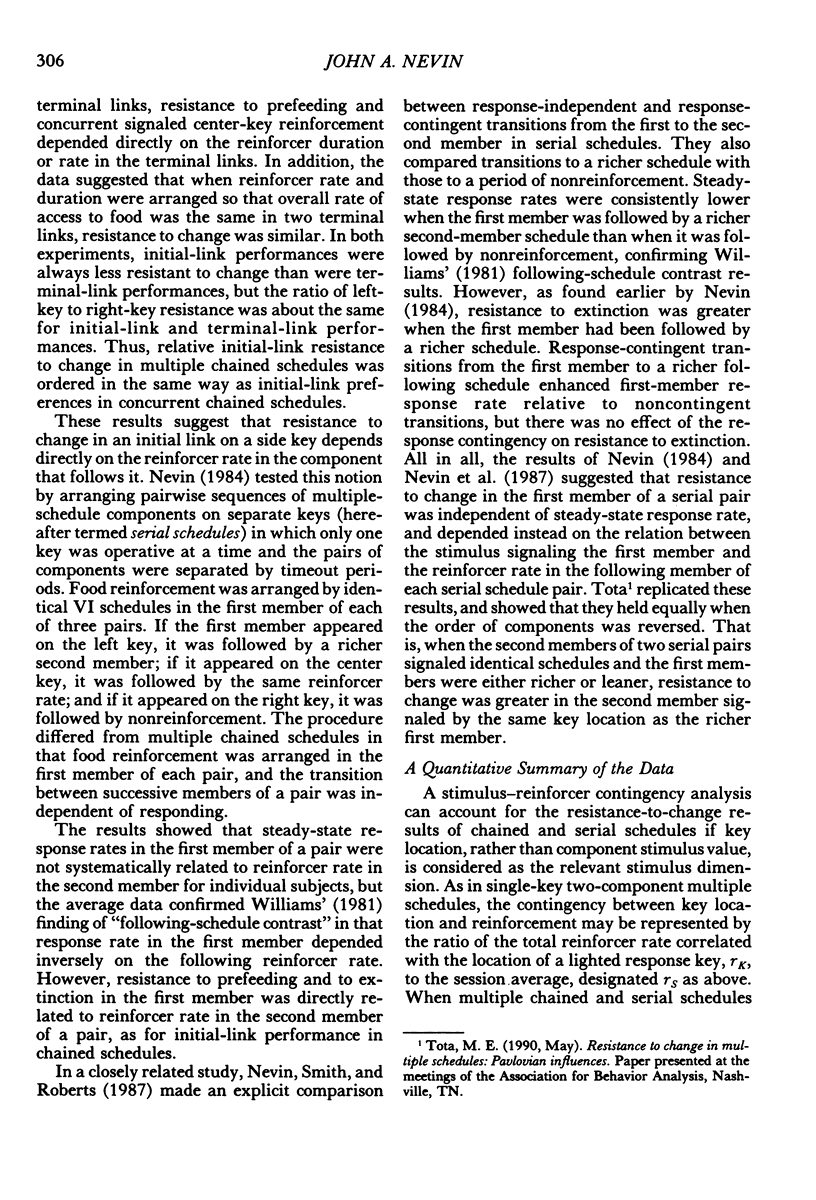
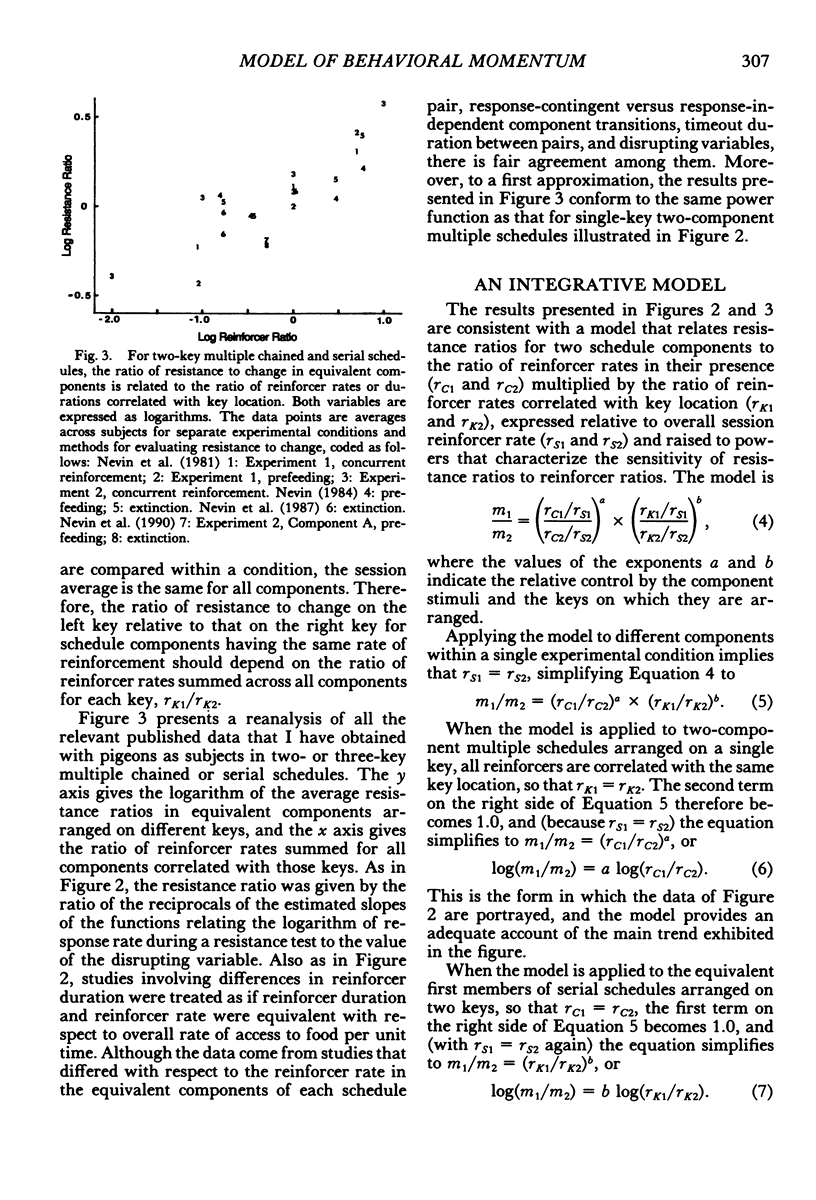
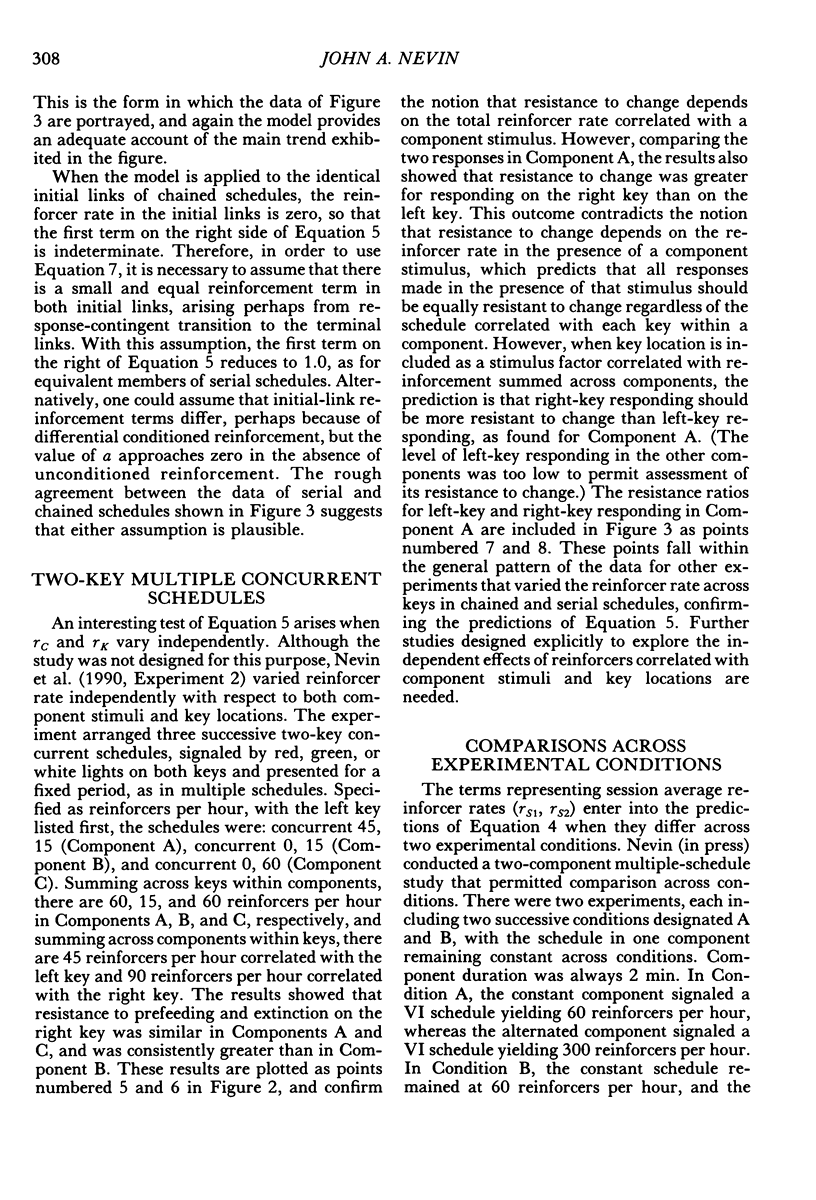
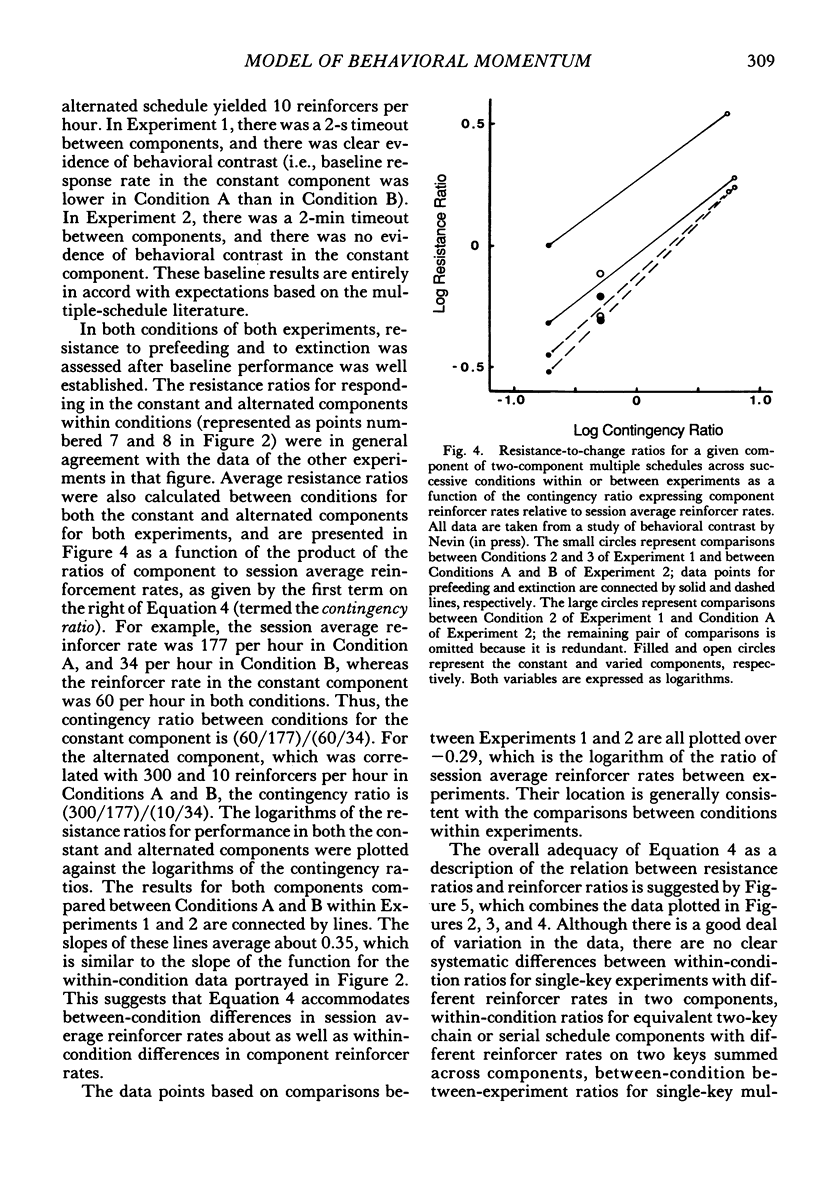
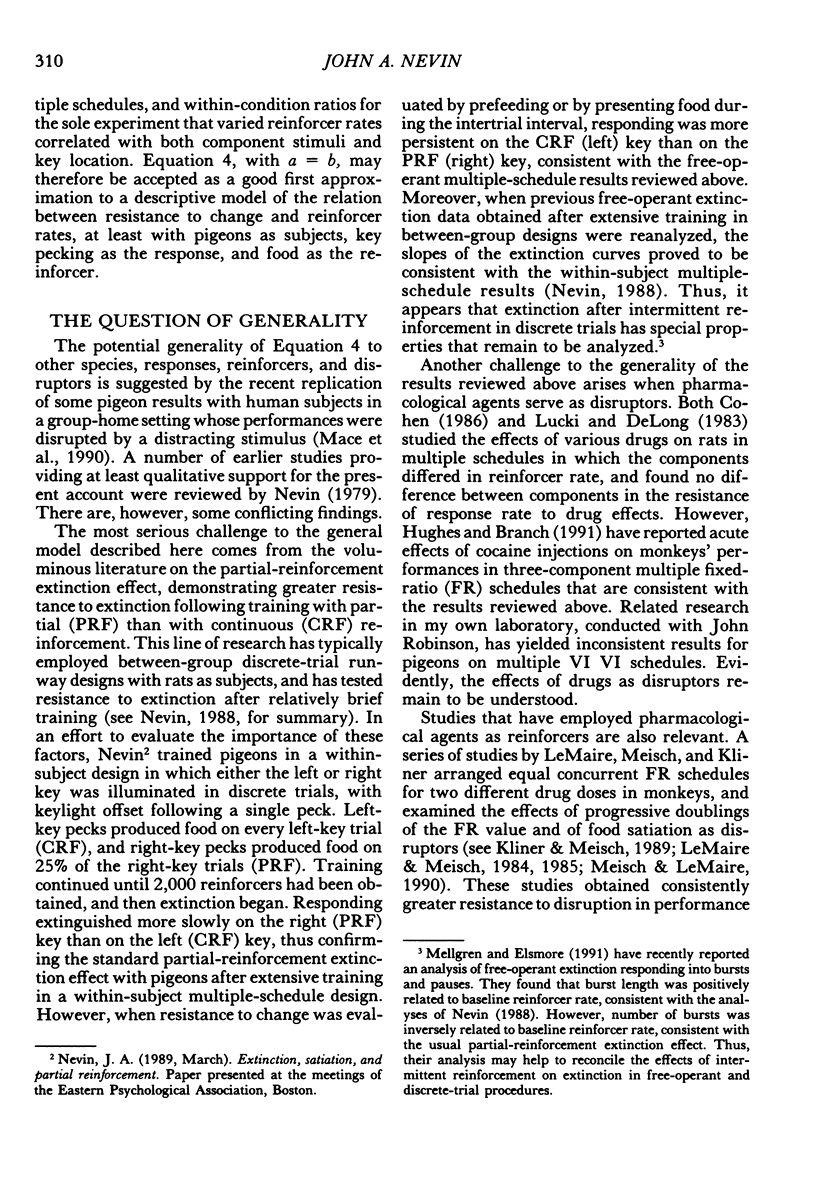
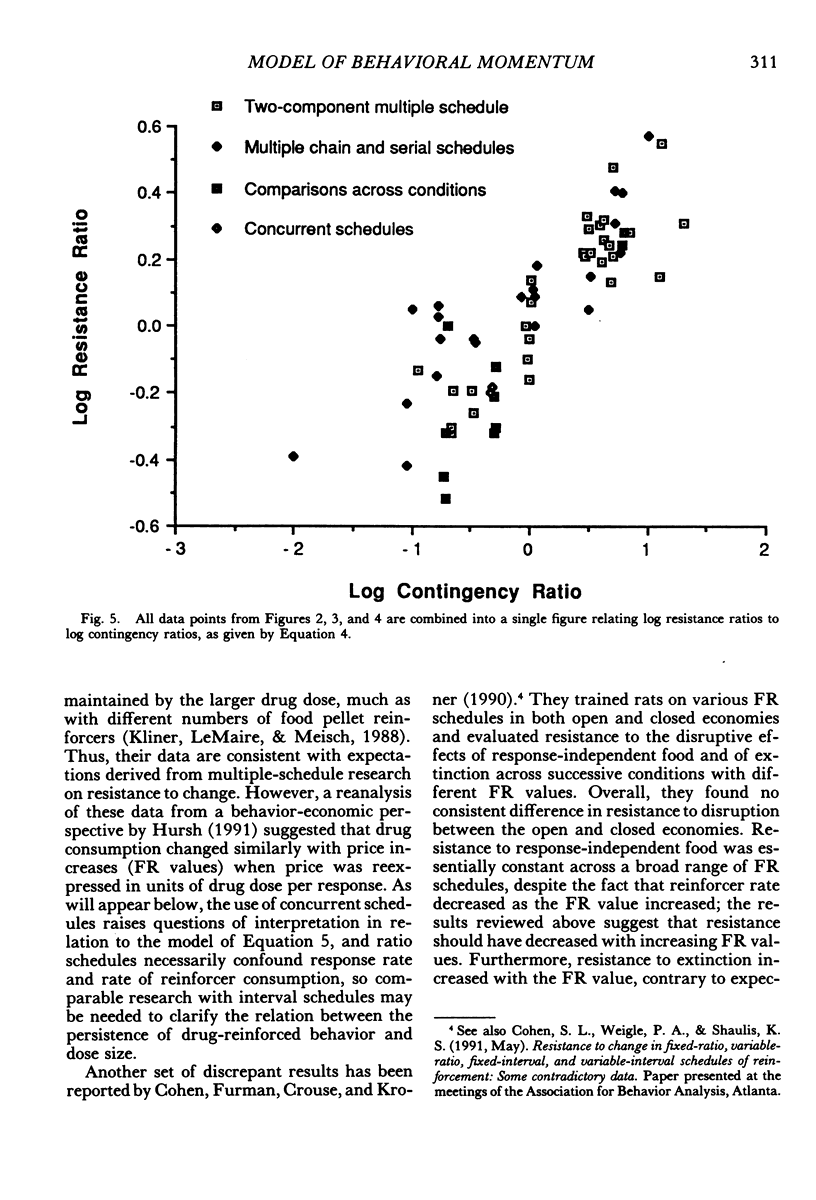
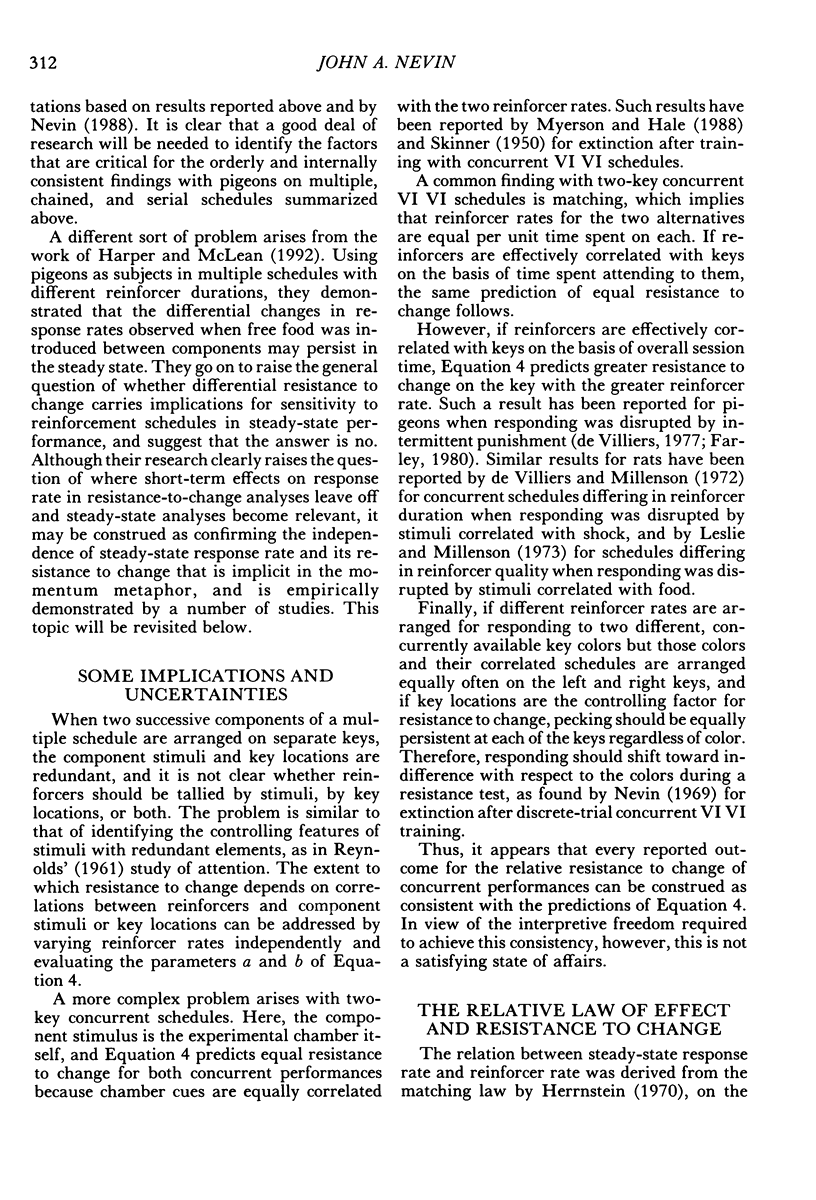
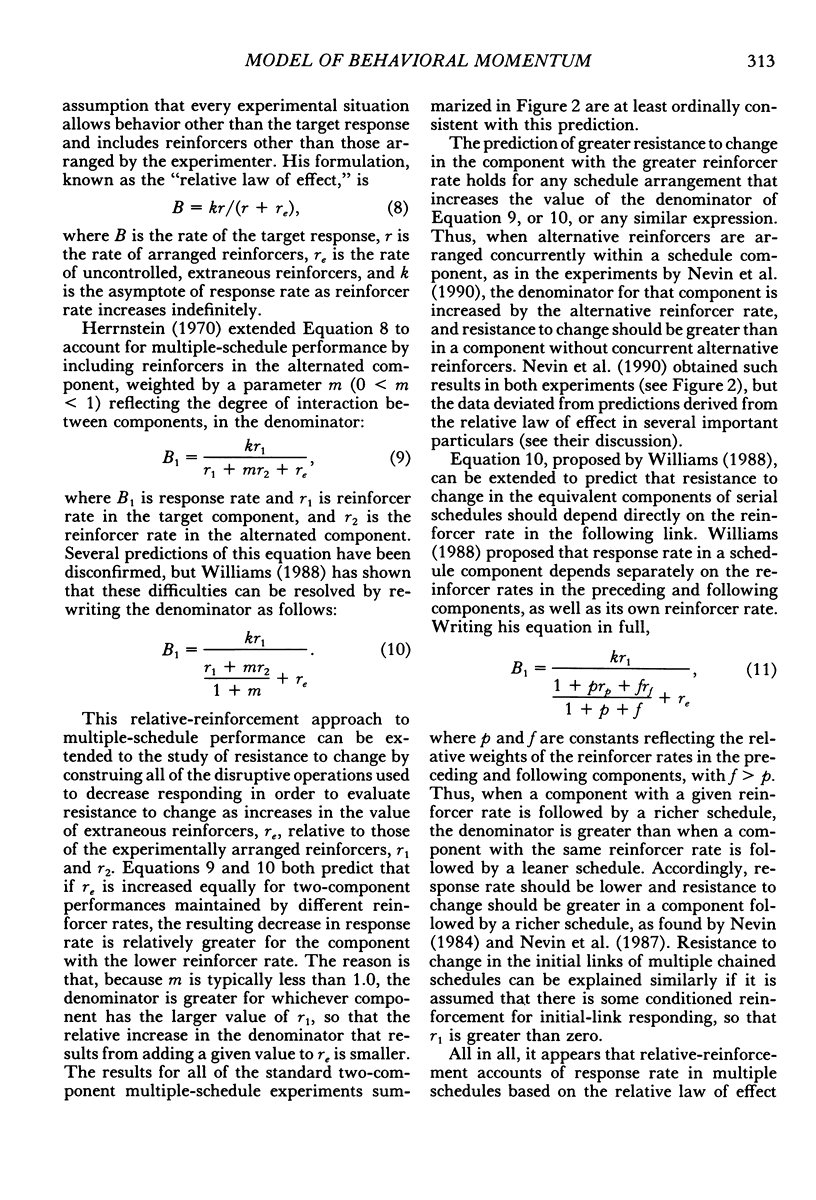
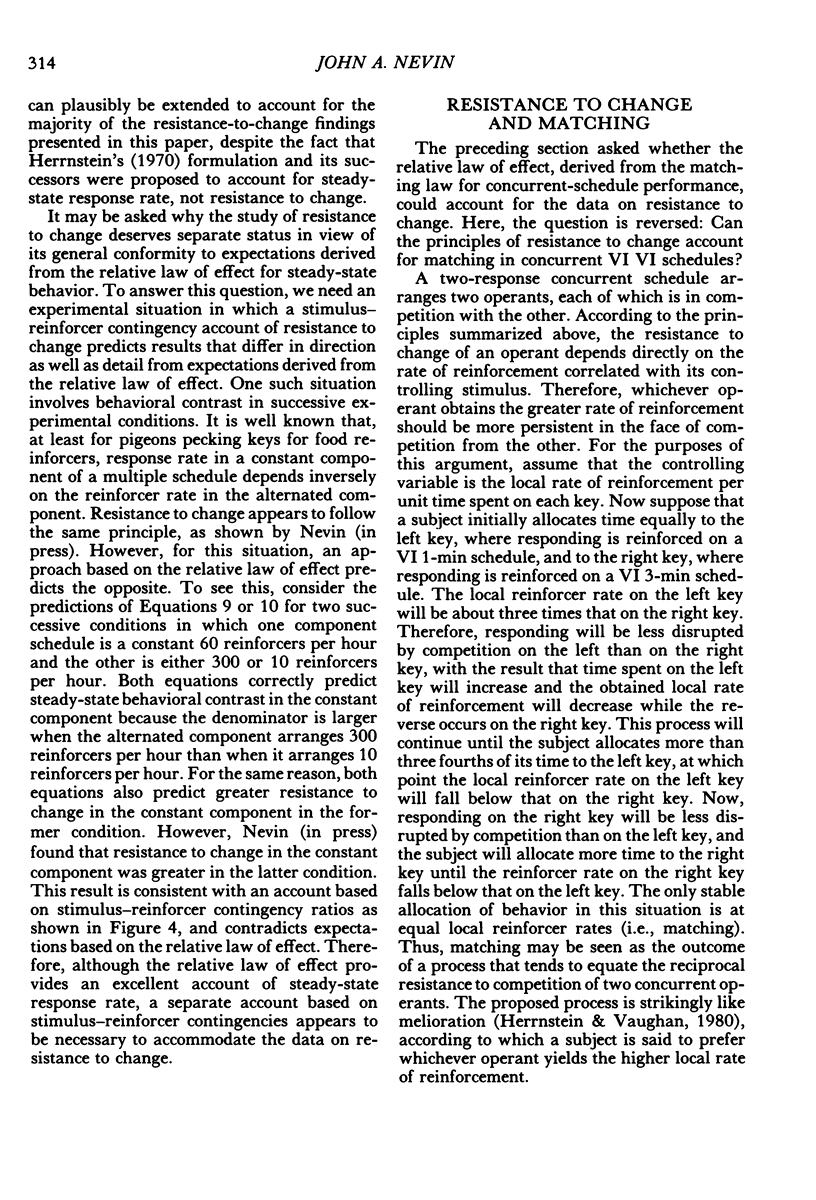
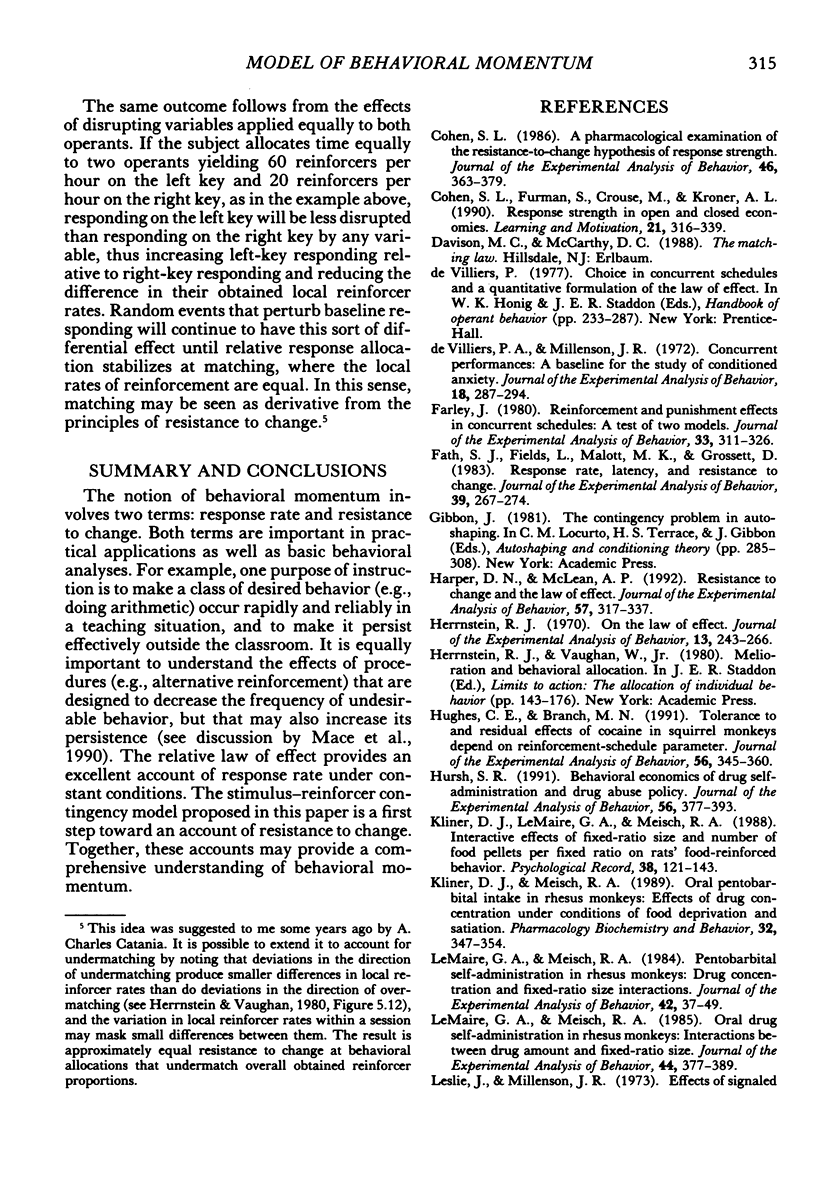
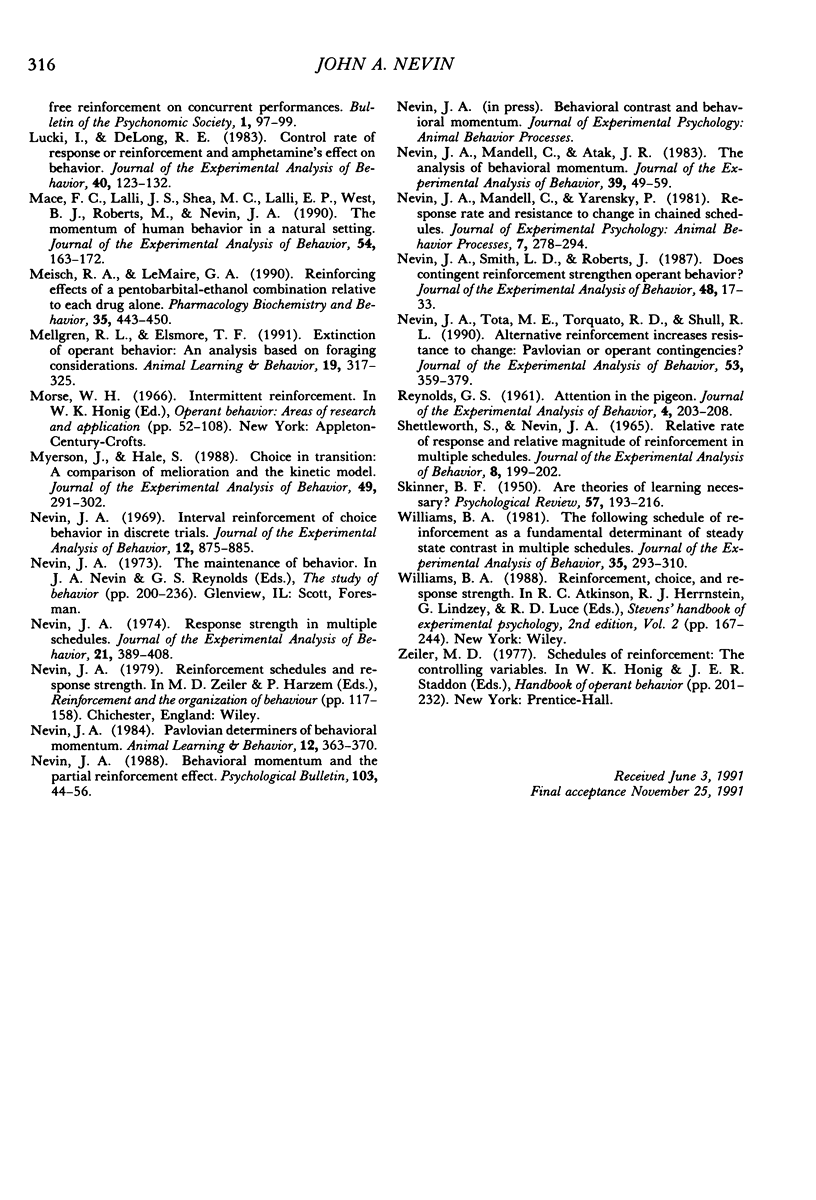
Selected References
These references are in PubMed. This may not be the complete list of references from this article.
- Cohen S. L. A pharmacological examination of the resistance-to-change hypothesis of response strength. J Exp Anal Behav. 1986 Nov;46(3):363–379. doi: 10.1901/jeab.1986.46-363. [DOI] [PMC free article] [PubMed] [Google Scholar]
- De Villiers P. A., Millenson J. R. Concurrent performances: a baseline for the study of conditioned anxiety. J Exp Anal Behav. 1972 Sep;18(2):287–294. doi: 10.1901/jeab.1972.18-287. [DOI] [PMC free article] [PubMed] [Google Scholar]
- Farley J. Reinforcement and punishment effects in concurrent schedules: A test of two models. J Exp Anal Behav. 1980 May;33(3):311–326. doi: 10.1901/jeab.1980.33-311. [DOI] [PMC free article] [PubMed] [Google Scholar]
- Fath S. J., Fields L., Malott M. K., Grossett D. Response rate, latency, and resistance to change. J Exp Anal Behav. 1983 Mar;39(2):267–274. doi: 10.1901/jeab.1983.39-267. [DOI] [PMC free article] [PubMed] [Google Scholar]
- Harper D. N., McLean A. P. Resistance to change and the law of effect. J Exp Anal Behav. 1992 May;57(3):317–337. doi: 10.1901/jeab.1992.57-317. [DOI] [PMC free article] [PubMed] [Google Scholar]
- Herrnstein R. J. On the law of effect. J Exp Anal Behav. 1970 Mar;13(2):243–266. doi: 10.1901/jeab.1970.13-243. [DOI] [PMC free article] [PubMed] [Google Scholar]
- Hughes C. E., Branch M. N. Tolerance to and residual effects of cocaine in squirrel monkeys depend on reinforcement-schedule parameter. J Exp Anal Behav. 1991 Sep;56(2):345–360. doi: 10.1901/jeab.1991.56-345. [DOI] [PMC free article] [PubMed] [Google Scholar]
- Hursh S. R. Behavioral economics of drug self-administration and drug abuse policy. J Exp Anal Behav. 1991 Sep;56(2):377–393. doi: 10.1901/jeab.1991.56-377. [DOI] [PMC free article] [PubMed] [Google Scholar]
- Kliner D. J., Meisch R. A. Oral pentobarbital intake in rhesus monkeys: effects of drug concentration under conditions of food deprivation and satiation. Pharmacol Biochem Behav. 1989 Jan;32(1):347–354. doi: 10.1016/0091-3057(89)90253-0. [DOI] [PubMed] [Google Scholar]
- Lemaire G. A., Meisch R. A. Oral drug self-administration in rhesus monkeys: interactions between drug amount and fixed-ratio size. J Exp Anal Behav. 1985 Nov;44(3):377–389. doi: 10.1901/jeab.1985.44-377. [DOI] [PMC free article] [PubMed] [Google Scholar]
- Lemaire G. A., Meisch R. A. Pentobarbital self-administration in rhesus monkeys: drug concentration and fixed-ratio size interactions. J Exp Anal Behav. 1984 Jul;42(1):37–49. doi: 10.1901/jeab.1984.42-37. [DOI] [PMC free article] [PubMed] [Google Scholar]
- Lucki I., DeLong R. E. Control rate of response or reinforcement and amphetamine's effect on behavior. J Exp Anal Behav. 1983 Sep;40(2):123–132. doi: 10.1901/jeab.1983.40-123. [DOI] [PMC free article] [PubMed] [Google Scholar]
- Mace F. C., Lalli J. S., Shea M. C., Lalli E. P., West B. J., Roberts M., Nevin J. A. The momentum of human behavior in a natural setting. J Exp Anal Behav. 1990 Nov;54(3):163–172. doi: 10.1901/jeab.1990.54-163. [DOI] [PMC free article] [PubMed] [Google Scholar]
- Meisch R. A., Lemaire G. A. Reinforcing effects of a pentobarbital-ethanol combination relative to each drug alone. Pharmacol Biochem Behav. 1990 Feb;35(2):443–450. doi: 10.1016/0091-3057(90)90182-h. [DOI] [PubMed] [Google Scholar]
- Myerson J., Hale S. Choice in transition: A comparison of melioration and the kinetic model. J Exp Anal Behav. 1988 Mar;49(2):291–302. doi: 10.1901/jeab.1988.49-291. [DOI] [PMC free article] [PubMed] [Google Scholar]
- Nevin J. A. Interval reinforcement of choice behavior in discrete trials. J Exp Anal Behav. 1969 Nov;12(6):875–885. doi: 10.1901/jeab.1969.12-875. [DOI] [PMC free article] [PubMed] [Google Scholar]
- Nevin J. A., Mandell C., Atak J. R. The analysis of behavioral momentum. J Exp Anal Behav. 1983 Jan;39(1):49–59. doi: 10.1901/jeab.1983.39-49. [DOI] [PMC free article] [PubMed] [Google Scholar]
- Nevin J. A. Response strength in multiple schedules. J Exp Anal Behav. 1974 May;21(3):389–408. doi: 10.1901/jeab.1974.21-389. [DOI] [PMC free article] [PubMed] [Google Scholar]
- Nevin J. A., Smith L. D., Roberts J. Does contingent reinforcement strengthen operant behavior? J Exp Anal Behav. 1987 Jul;48(1):17–33. doi: 10.1901/jeab.1987.48-17. [DOI] [PMC free article] [PubMed] [Google Scholar]
- Nevin J. A., Tota M. E., Torquato R. D., Shull R. L. Alternative reinforcement increases resistance to change: Pavlovian or operant contingencies? J Exp Anal Behav. 1990 May;53(3):359–379. doi: 10.1901/jeab.1990.53-359. [DOI] [PMC free article] [PubMed] [Google Scholar]
- REYNOLDS G. S. Attention in the pigeon. J Exp Anal Behav. 1961 Jul;4:203–208. doi: 10.1901/jeab.1961.4-203. [DOI] [PMC free article] [PubMed] [Google Scholar]
- SHETTLEWORTH S., NEVIN J. A. RELATIVE RATE OF RESPONSE AND RELATIVE MAGNITUDE OF REINFORCEMENT IN MULTIPLE SCHEDULES. J Exp Anal Behav. 1965 Jul;8:199–202. doi: 10.1901/jeab.1965.8-199. [DOI] [PMC free article] [PubMed] [Google Scholar]
- SKINNER B. F. Are theories of learning necessary? Psychol Rev. 1950 Jul;57(4):193–216. doi: 10.1037/h0054367. [DOI] [PubMed] [Google Scholar]
- Williams B. A. The following schedule of reinforcement as a fundamental determinant of steady state contrast in multiple schedules. J Exp Anal Behav. 1981 May;35(3):293–310. doi: 10.1901/jeab.1981.35-293. [DOI] [PMC free article] [PubMed] [Google Scholar]


